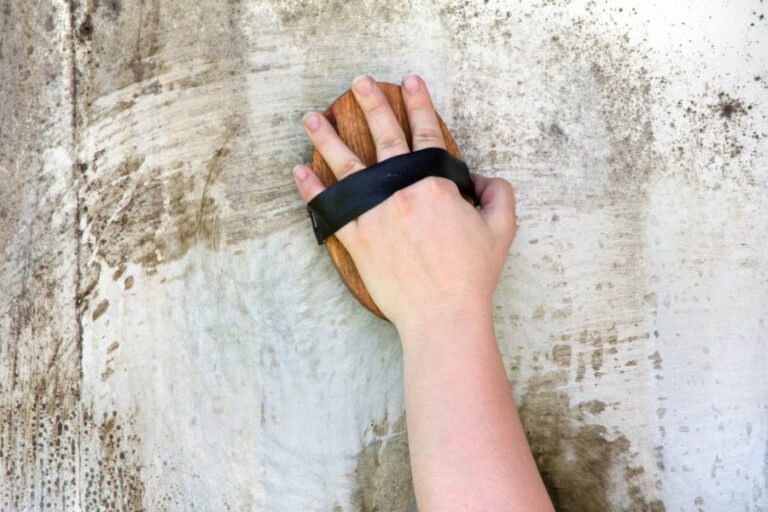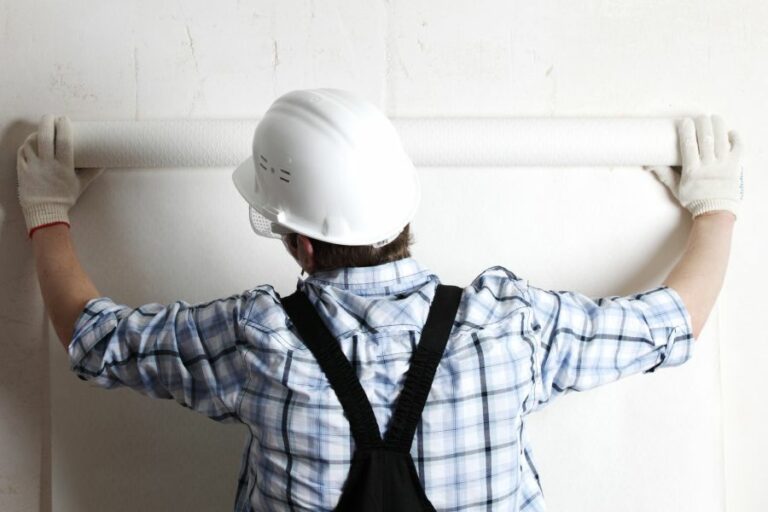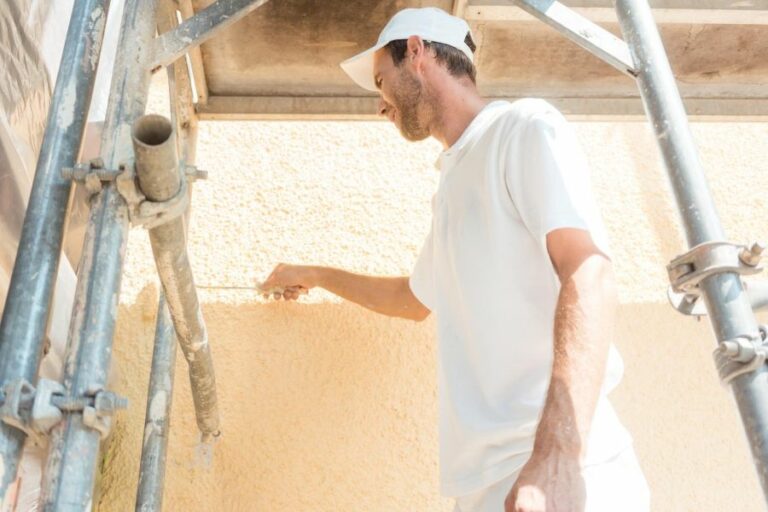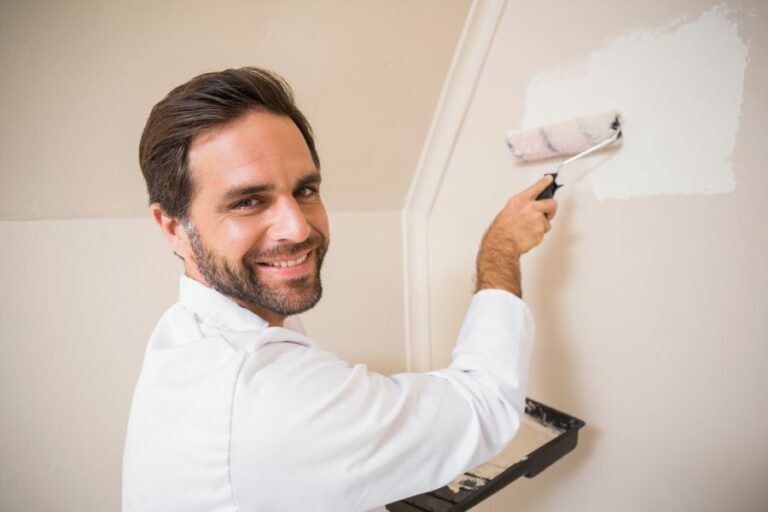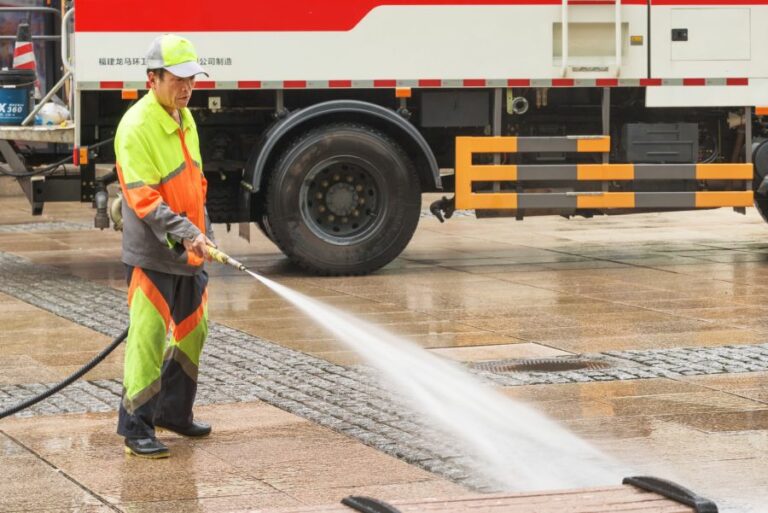Tips for Tackling Moisture Issues In Surface Prep. What Pros Say
Have you ever experienced moisture issues while preparing surfaces for painting or flooring, causing delays, inefficiencies, and less-than-desirable results? Well, you’re not alone. Moisture concerns are a common challenge that many individuals face when working on surface prep projects.
Tips for tackling moisture issues in surface prep:
To tackle moisture issues in surface preparation, understand the causes of moisture, measure moisture levels accurately, use moisture-resistant materials, ensure proper ventilation, control temperature and humidity, dry surfaces thoroughly before applying coatings, and conduct regular maintenance and inspections.
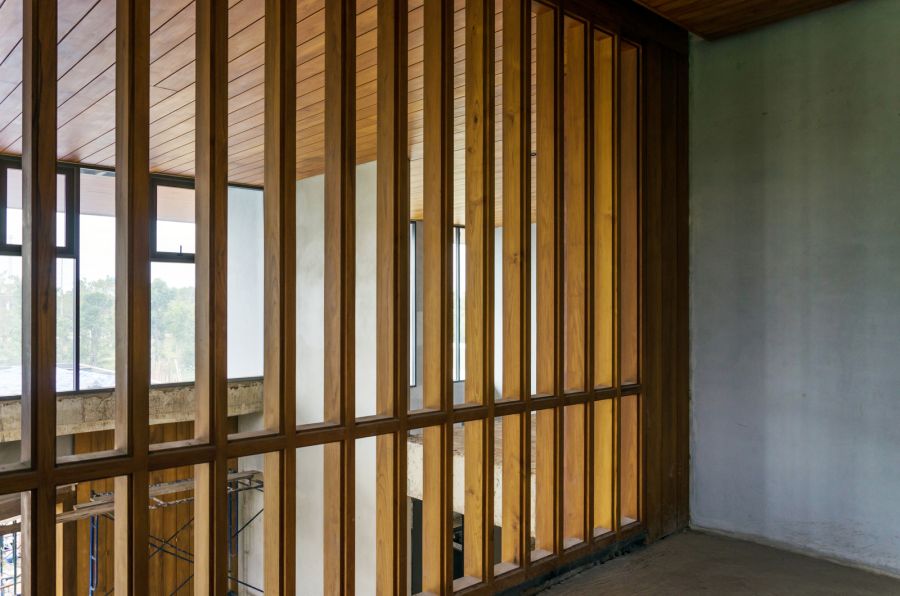
Don’t let moisture ruin your surface prep! Uncover the secrets to tackling moisture issues with expert advice and simple tips. Read on as we guide you through the process and help you achieve a flawless finish every time.
Contents
- 1 Strategies for Managing Moisture Problems in Surface Preparation
- 2 Preventing Surface Condensation: Effective Techniques
- 3 Key Methods to Minimize Moisture Issues
- 4 Safeguarding Against Moisture in Packaging Solutions
- 5 Avoiding Moisture Issues from Concrete Slab Condensation
Strategies for Managing Moisture Problems in Surface Preparation
Dealing with moisture is a crucial aspect of surface preparation, as it significantly impacts the integrity and durability of the finished product. Here, we provide some useful tips to address moisture issues and achieve the best results in surface prep.
• Understand the Causes of Moisture
Moisture issues arise from various sources, such as excess humidity, condensation, and water leaks. Understanding the root cause helps in devising an appropriate strategy to counteract the problem.
- Humidity: High humidity levels can cause moisture to accumulate on surfaces, especially in closed spaces like basements or storage rooms.
- Condensation: When warm, moist air comes into contact with a cold surface, it forms condensation. This can result from poor ventilation or insulation.
- Water leaks: Damaged roofs, pipes, or faulty drainage systems can lead to water seeping into walls, ceilings, and floors, causing moisture problems.
• Properly Measure Moisture Levels
Using the right tools for accurately measuring moisture content is essential for detecting problem areas and determining the appropriate corrective measures.
- Moisture meters: These instruments measure the moisture level in various materials like wood, concrete, and gypsum. Using an appropriate meter for your surface material is essential.
- Relative humidity (RH) probes: These probes are used to measure the humidity levels within concrete slabs, providing accurate information on potential moisture issues.
• Opt for Moisture-Resistant Materials
Choosing materials that can withstand high levels of moisture is always a good practice, as it enhances the durability of the surface and prevents potential damage.
- Moisture-resistant gypsum board: Also known as greenboard, this material has a water-resistant facing, making it suitable for use in areas with high humidity.
- Concrete sealers: Sealing concrete surfaces with high-quality sealers improves their moisture resistance and prevents the ingress of water and contaminants.
• Implement Proper Ventilation
A well-ventilated space reduces the chances of moisture accumulation and ensures a stable environment for surface prep.
- Install exhaust fans: Placing exhaust fans in areas with high moisture levels, like bathrooms and kitchens, helps eliminate excess humidity.
- Utilize air movers: Industrial air movers or fans can enhance air circulation and decrease moisture levels in enclosed spaces.
• Control Temperature and Humidity
Maintaining ideal temperature and humidity levels is crucial for preventing moisture-related issues.
- Dehumidifiers: These appliances work by removing moisture from the air and can be installed in spaces where humidity levels are high.
- Air conditioners: In addition to regulating temperature, air conditioners also control humidity, thus reducing the risk of moisture accumulation.
• Dry the Surface Thoroughly Before Applying Coatings
Applying any surface finishes or coatings on a wet or damp surface can lead to adhesion problems and deterioration of the final product.
- Use a moisture barrier primer: Applying a high-quality moisture barrier primer can help seal the surface and prevent moisture ingress.
- Allow adequate drying time: It’s essential to let the surface dry thoroughly before proceeding with the application of any coatings or finishes. This may require an extended drying period, especially in humid conditions.
• Regular Maintenance and Inspection
Routine maintenance and inspection play a vital role in preventing moisture issues and ensuring the long-term integrity of surfaces.
- Inspect caulking and sealants: Regularly check the condition of caulking and sealants around windows, doors, and other potential water ingress points. Replace or reapply as needed.
- Check for signs of water damage or leaks: Be vigilant and spot early signs of moisture problems, like discoloration, damp spots, or mold growth, to initiate corrective measures.
In conclusion, understanding the causes of moisture, using the right materials, and implementing moisture control measures can prevent and tackle moisture issues in surface preparation.
Emphasizing proper ventilation, maintaining ideal temperature and humidity levels, and performing regular inspections and maintenance work will ensure the longevity and integrity of your surfaces and coatings.
Preventing Surface Condensation: Effective Techniques
Condensation on surfaces can cause various problems, including property damage, mold growth, and unpleasant living conditions.
• Understanding the Causes of Condensation
Before diving into the prevention methods, it is essential to understand the root causes of condensation. Condensation occurs when warm, moist air comes into contact with a colder surface.
The warm air can no longer hold the moisture, which then turns into water droplets on the surface. Common causes include poor insulation, lack of ventilation, and high humidity levels.
– The Role of Humidity
Humidity plays a significant role in condensation formation. When humidity levels are high, the air holds more moisture. This increases the chances of condensation forming on colder surfaces. Monitoring and controlling humidity is essential in preventing condensation.
• Ventilation and Air Circulation
Improving ventilation is an effective way to prevent condensation. Opening windows and doors regularly allows for increased air circulation and reduces the moisture content in the air.
– Use Exhaust Fans
Exhaust fans should be installed in areas prone to generating moisture, such as bathrooms and kitchens. These fans help remove moisture-laden air from the room, reducing the chances of condensation forming.
– Install Air Vents
Another solution to improve air circulation is to install air vents in various locations throughout your property. Properly placed air vents can help distribute air evenly, avoiding pockets of stagnant air that can contribute to condensation issues.
• Proper Insulation
Proper insulation is crucial in preventing condensation on surfaces. Insulation helps to maintain an even temperature throughout your space, reducing the temperature differences between the air and surfaces.
– Insulate Walls and Roofs
Walls and roofs are prime locations for improved insulation as they are often in direct contact with the exterior environment. Insulating these areas can reduce the temperature differences between the inside and outside of a building, minimizing condensation risks.
– Insulate Windows and Doors
Windows and doors are also critical areas to insulate since they can have significant temperature differences between the interior and exterior surfaces. Double or triple-glazed windows can help maintain interior temperatures and prevent condensation.
Additionally, using weatherstripping on doors and windows helps seal gaps and further prevent temperature fluctuations that contribute to condensation problems.
• Controlling Indoor Humidity Levels
As mentioned earlier, high humidity levels increase the chances of condensation. By controlling indoor humidity levels, you can effectively prevent condensation on surfaces.
– Use Dehumidifiers
Dehumidifiers can help reduce humidity levels by removing moisture from the air. Placing dehumidifiers in problem areas, such as basements and poorly ventilated rooms, can have a significant impact on reducing condensation issues.
– Vent Moisture-Generating Appliances
Appliances such as dryers and stoves contribute to increased indoor humidity levels. Ensuring that these appliances are adequately vented to the outside can help maintain appropriate humidity levels indoors.
– Maintain Optimal Indoor Temperature
Keeping the indoor temperature at a consistent level can help reduce humidity levels. Not only does this help prevent condensation, but it also makes your space more energy-efficient. A recommended indoor temperature range is between 65-70°F (18-21°C).
• Regular Maintenance
Regular maintenance is essential for preventing condensation issues in the long run.
– Keep Surfaces Clean
Dust and dirt can attract moisture, increasing the chances of condensation forming on surfaces. By keeping surfaces clean, you can reduce the likelihood of moisture accumulation.
– Inspect and Repair Leaks
Water leaks can significantly increase humidity levels. Swiftly locating and repairing any leaks can help maintain appropriate indoor humidity levels and prevent condensation problems.
– Monitor Humidity Levels
Monitoring humidity levels enables you to identify potential issues early and take corrective actions if needed. Hygrometers, which measure the moisture content in the air, are affordable tools you can use to monitor indoor humidity levels.
In conclusion, preventing condensation on surfaces is achievable through a combination of proper ventilation, insulation, humidity control, and regular maintenance. Following these guidelines can help you maintain a comfortable, healthy, and energy-efficient environment.
Methods | Description |
|---|---|
Increase air circulation | Use fans or open windows to keep air moving, reducing the chances of condensation forming. |
Insulate surfaces | Apply insulation materials to cold surfaces (such as walls and windows) to decrease temperature differences that contribute to condensation. |
Heating | Increase the temperature of the room to minimize the temperature difference between surfaces and the air, which reduces the risk of condensation. |
Dehumidification | Use a dehumidifier to remove excess moisture from the air and maintain a comfortable humidity level. |
Ventilate | Ensure proper ventilation in areas prone to moisture, such as bathrooms and kitchens, by using exhaust fans or vented windows. |
Avoid excessive moisture-producing activities | Limit the use of humidifiers and indoor drying of laundry to reduce the amount of moisture in the air. |
Key Methods to Minimize Moisture Issues
Excess moisture in your home can lead to various problems, such as dampness, mold, and mildew. Managing moisture is crucial for maintaining a healthy home environment. Here are some practical tips to reduce moisture and keep your home comfortable and free of dampness-related issues.
• Identify the Moisture Sources
Before addressing the moisture problem, you need to identify where the moisture is coming from. Some common sources of moisture are:
- Condensation from indoor activities (such as cooking, showering, and breathing)
- Leaking pipes and faucets
- Rainwater seeping in through the roof, walls, or foundation
- Groundwater entering the home from the soil
Once you’ve identified the sources of moisture, you can take appropriate steps to reduce and manage it.
• Improve Ventilation
Proper ventilation is essential for removing excess moisture from your home. Some effective ways to improve ventilation include:
- Use exhaust fans: Install exhaust fans in kitchens and bathrooms to remove moisture generated from cooking and showering. Make sure the fans are vented to the outdoors and not to the attic or crawl space.
- Open windows: Open windows regularly to allow fresh outdoor air to circulate in your home. This helps to reduce the buildup of moisture from daily activities.
- Air circulation: Use ceiling fans or portable fans to promote air circulation and help reduce moisture buildup.
• Control Humidity Levels
Monitoring and controlling the humidity levels in your home can help reduce moisture. A hygrometer is a useful device for measuring indoor humidity. Ideally, the relative humidity in your home should be between 30-50%. Some ways to control humidity include:
- Use a dehumidifier: A dehumidifier can help reduce the humidity levels in your home, especially in damp areas such as basements and crawl spaces.
- Air conditioning: Using an air conditioner can also help control humidity levels. Make sure your air conditioner is properly maintained and the filters are clean to ensure it functions efficiently.
- Seal air leaks: Sealing air leaks around doors, windows, and other openings can help prevent the entry of humid air from outside.
• Dry Wet Surfaces Immediately
To prevent moisture buildup, it’s essential to promptly dry any wet surfaces in your home. Some tips for drying wet surfaces include:
- Wipe spills: Clean any spills on floors, countertops, or other surfaces as soon as possible to prevent them from getting absorbed by the material.
- Dry wet clothes: Hang wet clothes to dry outdoors, or use a vented dryer. Avoid drying clothes indoors, as the moisture from wet clothes can increase humidity levels.
- Mop up excess water: If water enters your home due to flooding or leaks, remove the water using a mop, wet vacuum, or a water-absorbent material.
• Dry Out Carpets and Rugs
Carpets and rugs can easily absorb moisture, leading to dampness and mold growth. To prevent this, follow these tips:
- Vacuum regularly: Frequent vacuuming can help remove moisture from carpets and rugs.
- Use a carpet dehumidifier: A carpet dehumidifier can help dry out damp carpets and prevent mold growth.
- Consider alternative flooring: If you live in a damp environment or have a history of moisture problems in your home, consider replacing carpets with moisture-resistant flooring options such as tiles or vinyl.
• Insulate Your Home
Proper insulation can help prevent condensation buildup on your walls, ceilings, and windows. Some ways to insulate your home include:
- Insulate walls and ceilings: Adding insulation to your walls and ceilings can help to prevent moisture buildup by making it harder for warm, moist air to condense on cold surfaces.
- Seal windows: You can use weatherstripping or insulation film to seal gaps around your windows to prevent condensation.
- Insulate crawl spaces and basements: Insulating these areas can help prevent the transfer of moisture between the ground and your home.
• Maintain Gutters and Drainage Systems
A properly functioning gutter and drainage system can help prevent rainwater from seeping into your home. Some tips for maintaining your gutters and drainage systems include:
- Clean gutters: Regularly clean your gutters to remove leaves, debris, and other obstructions that can cause water to overflow and seep into your home.
- Install gutter guards: Gutter guards can help prevent debris from clogging your gutters and improve their efficiency.
- Ensure proper drainage: Make sure the soil around your home slopes away from the foundation to prevent water from pooling near your home.
For more information about reducing moisture in your home, check out this useful guide from the U.S. Environmental Protection Agency: A Brief Guide to Mold, Moisture, and Your Home.
| Tips to Reduce Moisture | |
|---|---|
| 1 | Use a dehumidifier to control humidity levels in your home. |
| 2 | Ensure proper ventilation in areas where moisture is produced, like the kitchen and bathroom. |
| 3 | Regularly clean air conditioning units and change their filters to prevent excess moisture. |
| 4 | Use exhaust fans in areas with high humidity, such as bathrooms and kitchens. |
| 5 | Fix any leaks in your home’s roof, walls, or plumbing. |
| 6 | Insulate your home to help control temperature and moisture levels. |
| 7 | Keep gutters and drains clear of debris to prevent water from seeping into your home. |
| 8 | Use moisture-absorbing products like silica gel packets in small, enclosed spaces. |
| 9 | Store firewood outside, as it can release moisture when stored indoors. |
| 10 | Keep indoor plants to a minimum, as they can increase humidity levels in your home. |
Safeguarding Against Moisture in Packaging Solutions
• The Importance of Moisture Prevention in Packaging
Preventing moisture in packaging is crucial to ensure that products maintain their quality and functionality.
Excess humidity interacting with packaged products can cause multiple issues, including mold, corrosion, and product degradation. Therefore, it is necessary to take precautions to minimize potential damage to the products.
• Packaging Materials: Selecting the Right Kind
One of the key aspects of moisture prevention is selecting appropriate packaging materials. Your choice of materials will depend on the nature of your product, as well as the intended target market and environmental conditions. Here are some materials that are suitable for moisture prevention:
- Plastic: Plastic is an excellent moisture barrier and can be used in various forms, such as wraps, pouches, and containers.
- Aluminum foil: Aluminum is a commonly used moisture-resistant material that also provides an effective barrier against light and oxygen.
- Coated papers: Some paper products are coated with moisture-resistant substances, such as wax or plastic, making them suitable for preventing moisture.
- Desiccants: These are small packets that absorb moisture and can be placed within the packaging to help control humidity levels.
When selecting materials, consider the intended storage conditions, as well as the vulnerability of your product to moisture damage.
• Moisture-Proof Sealing Methods
Sealing your packaging is a critical step in preventing moisture from entering and damaging your products. Some effective sealing methods include:
- Heat-sealing: This method involves sealing plastic or other heat-sensitizing material using heat, ensuring air and moisture-tight seal.
- Vacuum-sealing: Vacuum-sealing involves removing the air from a package and subsequently sealing it. This process can help in reducing the moisture content within the package.
- Pressure-sensitive seals: These seals consist of pressure-sensitive adhesive and a release liner to form an air-tight seal.
- Induction sealing: This method uses an induction coil that generates an electromagnetic field, which produces heat and seals the package tightly.
- Tamper-evident seals: These seals help in indicating if a package has been tampered with or opened and can be an added measure to ensure moisture prevention.
• Proper Storage Conditions
Maintaining proper storage conditions is essential to prevent moisture from affecting your products. Some aspects to consider include:
- Temperature control: Maintain a stable temperature in your storage facility, as fluctuating temperatures can cause condensation and thus increase moisture levels.
- Humidity control: Keep relative humidity below 50% ideally, as high humidity can contribute to moisture damage.
- Avoid direct contact with the ground or walls: Store your products on elevated shelves to reduce the possibility of moisture transfer.
- Proper ventilation: Ensure adequate ventilation in your storage facility to maintain proper air circulation and reduce humidity.
- Inspect and monitor: Regularly inspect your storage facility for signs of moisture damage, and use humidity sensors to monitor the levels.
• Packaging Best Practices
To ensure the effectiveness of your moisture prevention strategies, it is essential to implement best practices in your packaging processes:
- Minimize product exposure: Keep products sealed and protected during storage and transport.
- Educate employees: Train your staff in proper packaging techniques and the importance of moisture prevention.
- Quality control: Implement a quality control process to ensure the effectiveness of your packaging and moisture prevention efforts.
- Communicate with suppliers: Collaborate with your suppliers to ensure that your packaging materials are suitable for the intended purpose and meet moisture prevention standards.
• Recommendations Based on Personal Experience
I have found that using a combination of proper packaging materials, methods, and storage conditions is the most effective way to prevent moisture in packaging.
For instance, the use of desiccant packets alongside moisture-resistant materials like aluminum foil has proven to be a highly effective strategy in maintaining product quality.
Another recommendation is to invest in monitoring equipment like humidity sensors to ensure that storage conditions are consistently maintained, as this can greatly reduce the risk of moisture damage.
Finally, regularly reviewing and updating your packaging processes can help identify areas where improvements can be made to enhance moisture prevention.
• Useful Resources
For more information about moisture prevention in packaging, visit the following websites:
- The National Institute of Standards and Technology (NIST) offers resources and guidance on various aspects related to packaging and moisture prevention standards.
- Food and Agriculture Organization of the United Nations (FAO) provides information on packaging practices and guidelines for maintaining food quality, including moisture prevention.
By implementing the strategies and recommendations outlined in this article, you can effectively prevent moisture in packaging and safeguard the quality and integrity of your products.
Avoiding Moisture Issues from Concrete Slab Condensation
Moisture issues caused by condensation in concrete slabs can lead to a host of problems, ranging from mold and mildew growth to compromised structural integrity. Thus, it is important to take proactive measures to minimize the risks associated with moisture-related problems.
• Properly Design the Slab
Designing a concrete slab properly can significantly reduce the chances of moisture issues. There are a few important factors to consider, which include:
– Placement and Grading
Proper placement and grading of the slab is essential to promote drainage away from the structure. It is recommended to have a slope of at least 1% (1/8 inch per foot) when grading.
– Vapor Barriers
Installing a vapor barrier beneath the slab is a proven way to minimize the intrusion of moisture from the ground. Vapor barriers consist of high-quality, impermeable materials such as polyethylene sheeting or other specialty products.
The U.S. Department of Energy recommends using a vapor barrier with a permeance rating of 0.1 perms or less.
– Joint Design
Joint design plays a critical role in preventing moisture from seeping through cracks in the slab. Control joints, for example, should be properly spaced, and construction joints should be well-sealed to avoid moisture intrusion.
• Adequate Curing Process
The curing process is crucial for achieving a durable and strong concrete slab. Skipping or hastening this process can result in a weaker slab that may crack and allow moisture to seep in.
– Initial Curing
Properly moistening the slab during the first 24 to 48 hours is essential for preventing excessive water evaporation, which can lead to shrinkage cracking. This can be achieved by deploying water sprays, damp coverings, or chemical curing compounds.
– Secondary Curing
After the initial curing period, ensure that the slab is adequately protected from excessive drying. This can be accomplished by placing a moisture cover over the slab or by applying a curing compound.
• Control Indoor Moisture Levels
Maintaining proper indoor humidity levels can significantly reduce the risk of condensation on concrete slabs.
– Ventilation and Air Circulation
Adequate ventilation and air circulation can help to regulate indoor moisture levels. Ensure that moisture-generating areas, such as kitchens and bathrooms, have proper exhaust fans. Moreover, circulate the air inside the building using ceiling fans, exhaust fans, or whole-house ventilation systems.
– Dehumidifiers
Using dehumidifiers can be an effective way to reduce indoor humidity levels. Ensure that you select a properly sized dehumidifier to suit the conditions of your property.
• Insulate the Slab
Insulating the slab can help in preventing condensation by keeping the surface temperature above the dew point. There are several insulation options, including rigid foam, spray foam, and batt insulation.
– Rigid Foam Insulation
Rigid foam insulation is an excellent option for concrete slabs, as it offers excellent thermal performance and moisture resistance. Furthermore, it can be placed on the interior or exterior surface of the slab, depending on the project requirements.
– Spray Foam Insulation
Spray foam insulation offers a flexible solution for concrete slabs, as it can be applied to irregular surfaces and fill voids. Additionally, it provides an additional air and moisture barrier when properly installed.
– Batt Insulation
Batt insulation, although not as common as slab insulation, can provide a cost-effective option for reducing heat transfer and preventing condensation. It is essential to ensure that the batt insulation remains dry to maintain its effectiveness.
• Monitor and Maintain Concrete Slabs
Regular inspections and maintenance of the slab are essential to prevent moisture issues.
– Periodic Inspections
Perform periodic inspections of the slab to look for any signs of moisture issues, such as discoloration, mold, or efflorescence. Additionally, check for any cracking or movement in the slab that can potentially lead to moisture intrusion.
– Repair and Maintenance
Address any identified issues immediately to prevent moisture problems from worsening. Repairs may include sealing cracks, replacing damaged insulation, or improving drainage systems.
In conclusion, preventing condensation and the associated moisture-related problems in concrete slabs is achievable by adopting a proactive approach.
Designing the slab properly, ensuring adequate curing, managing indoor humidity levels, insulating the slab, and diligently monitoring and maintaining the concrete are all effective strategies to minimize moisture-related issues.


